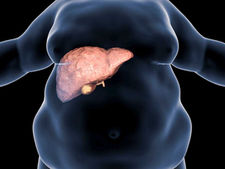
Cerebellar Prolapse
What is Arnold Chiari?
It is the herniation of the lowest extensions of the cerebellum, called tonsil, through the opening at the base of the skull (foramen magnum) into the spinal canal. The herniated tissue affects the circulation of the cerebrospinal fluid and causes complaints. As a result, cerebrospinal fluid may accumulate in the brain (hydrocephalus) or spinal cord (syringomyelia).
Type 1: It is cerebellum compression that occurs as a result of the small size of the back of the head. This condition can be observed in both adults and children. It is the most common type of Arnold Chiari Syndrome and can cause cysts in the spinal cord.
Type 2: It occurs during birth and affects especially babies. It occurs together with spina bifida, a spinal cord anomaly. If the spine does not close before birth, the spinal cord protrudes like a sac in the part that does not close.
Type 3: It is rare and occurs mostly in babies, with the formation of a fluid sac behind the baby's neck. This is a birth defect called encephalocele.
Type 4: Occurs in babies when the cerebellum does not develop properly.
What are the symptoms of Arnold Chiari Syndrome?
Symptoms in adults can be listed as follows:
Neck pain Dizziness Numbness in hands and feet Difficulty in swallowing Hearing loss, ringing in the ears Loss of sensation in the trunk and head area Curvature in the spine Loss of balance
Symptoms in babies can be listed as follows:
Eating problem, swallowing problem, belching, vomiting, irregular breathing, slowing down of body development, weakness in the arms, growth in the head, epileptic fits, state of irritability
How is Arnold Chiari Disease Treated?
Treatment varies depending on the type, severity and symptoms of prolapse. Some medications may be prescribed for mild pain that does not affect daily life much. If the disease causes serious symptoms or damages neural tissues, surgical treatment is required. The type and number of surgeries needed depend on the patient's condition. Brain prolapse surgery in adults is performed by excising a part of the skull bone. The exposed part of the brain is then covered with tissue taken from another part of the body. This process relieves the pressure on the spine by creating more space for the cerebellum and brainstem. If needed during surgery, the cerebellum tonsils are reduced in size using electric current. It may also be necessary to remove a small part of the spine to provide more space. With surgery for babies and children, congenital defects such as spina bifida and encephalocele accompanying cerebellar prolapse are treated. Surgery is performed to reposition the spinal cord and close openings in the neck or back. If there is hydrocephalus, a tube is inserted to drain excess fluid from the brain to reduce intracranial pressure. Surgery is performed to relieve the severity of symptoms.
FOR INFORMATION AND APPOINTMENT, YOU CAN LEAVE YOUR NUMBER OR ASK OUR EXPERTS
YOU CAN LEAVE YOUR NUMBER FOR INFORMATION AND APPOINTMENT AND ASK QUESTIONS TO OUR EXPERTS



-04.png)
-06.png)
-05.png)
-08.png)
-07.png)





















